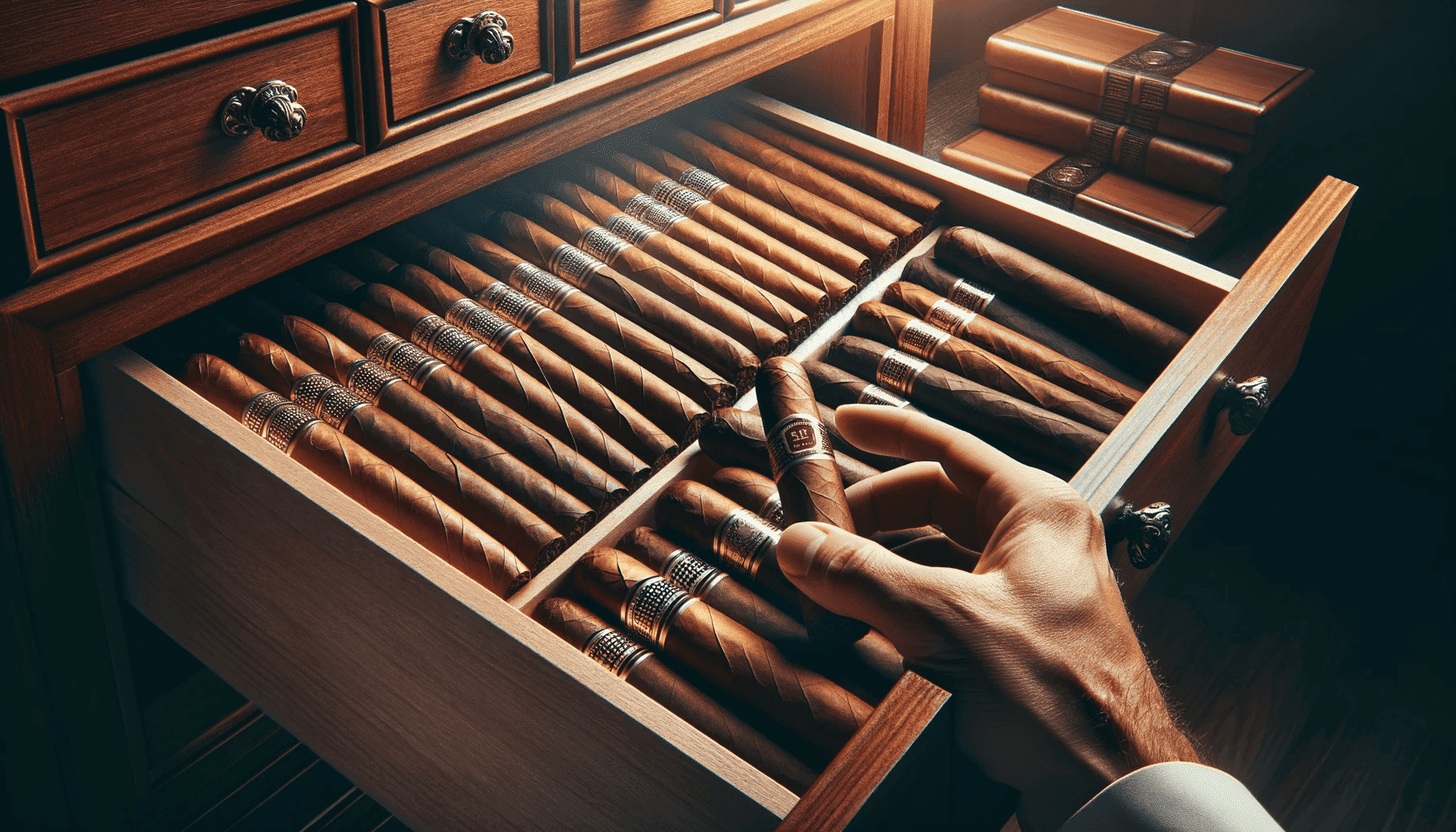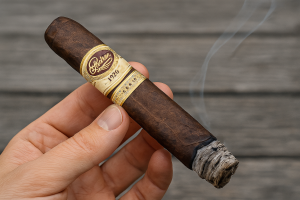How to Age a Cuban Cigar Properly: Master Cigar Storage

For every cigar enthusiast, knowing how to age a Cuban cigar properly is a must.
The rich flavors and complex nuances of a properly aged Cuban cigar are unparalleled, offering a true feast for the senses.
So, stay with us and learn how to unlock the hidden flavors and elevate your smoking experience by aging a cigar the right way.
- Aging Cuban Cigars - Step-by-Step
- Understanding Cuban Cigars and Aging
- Selecting and Purchasing Cuban Cigars for Aging
- Creating the Perfect Aging Environment
- Evaluating the Aging Progress
- Common Mistakes to Avoid
- FAQ
Aging Cuban Cigars - Step-by-Step
Now that you have established the perfect aging environment, it's time to embark on the aging journey. Let's explore the step-by-step process:
- Properly Handling and Inspecting Cigars: Before placing your cigars in the aging container, carefully handle each cigar, examining it for any visible imperfections. Avoid touching the wrapper with your bare hands, as the oils from your skin can affect the flavor. Use a pair of clean, non-powdered gloves for handling.
- Storing Cigars in the Aging Container: Place the cigars in your prepared humidor, ensuring they are not packed too tightly. Leave some breathing room to allow for proper air circulation. Avoid mixing different brands or diverse tobacco blends within the same container, as they may influence each other's aging process.
- Rotating and Reorganizing Cigars: Every few months, rotate the position of your cigars within the humidor. This ensures even aging and prevents any potential moisture accumulation. It's also a good time to inspect for any signs of mold or tobacco beetles, which can be detrimental to your collection.
- Tracking Aging Periods and Dates: Keep a logbook or use a digital tracking app to document the aging periods and dates for each cigar. This information will help you keep track of their progress and decide when they have reached their prime.
Understanding Cuban Cigars and Aging
Known worldwide for their impeccable craftsmanship and rich tobacco, Cuban cigars are the epitome of luxury.
Their distinct flavors and aromas are a result of several factors, including the choice of tobacco varieties and the expertise of the roller.
When it comes to aging, Cuban cigars are like fine wine. Just as wine gets better with age, cigars can reach new heights of flavor and complexity when properly aged.
Several factors influence the aging process, such as the tobacco varieties used, the way they are wrapped, the storage conditions, and the duration of aging.
Selecting and Purchasing Cuban Cigars for Aging
If you're considering aging Cuban cigars, it's important to start with high-quality cigars. Look for cigars that have been well-constructed using carefully selected tobacco leaves.
The recommended age for purchasing cigars for aging is around three to five years. By this time, they will have already undergone some aging, allowing you to build upon the existing flavors.
When looking to purchase authentic Cuban cigars, it's crucial to rely on reputable sources. Trusted Cuban cigar retailers and authorized dealers are your best bet to ensure authenticity.
Avoid purchasing from unauthorized sellers or online auction platforms, as counterfeit cigars are a prevalent issue.
Creating the Perfect Aging Environment
Firstly, temperature and humidity levels are vital considerations.
Ideal storage conditions often involve a temperature between 64-70°F (18-21°C) and humidity levels of around 65-70%. This range allows for a slow and controlled aging process.
Choosing a suitable aging container is equally important. Wooden humidors lined with Spanish cedar are a popular choice for aging cigars. They provide an excellent environment for the cigars to develop their flavors over time.
Regular monitoring and maintenance of the aging environment are key to ensuring proper aging.
Use a hygrometer to keep track of humidity levels and consider investing in a calibrated thermometer to monitor the temperature accurately. Make the necessary adjustments to maintain a consistent environment for your cigars.
Evaluating the Aging Progress
Patience is key when it comes to aging Cuban cigars. Establishing a timeline for aging is subjective, depending on your personal preferences and the specific cigars you are aging.
However, a general rule of thumb is to start sampling after a year or two of aging.
As your cigars age, they will undergo aesthetic changes that indicate progress. Look for a deepening color in the wrapper and a silky, oily texture. The flavors and aromas will also evolve, becoming more nuanced and complex over time.
Common Mistakes to Avoid
Achieving the perfect aging process requires care and attention. Here are some common mistakes to avoid:
- Over-aging or Under-aging Cigars: Aging cigars too long can lead to a loss of flavor, while under-aging may prevent the flavors from fully developing. Finding the sweet spot requires experimentation and periodic sampling.
- Inconsistent Temperature and Humidity Levels: Fluctuations in temperature and humidity can have a negative impact on the aging process. Be diligent in maintaining a stable environment for your cigars throughout the aging period.
- Exposure to Direct Sunlight or Extreme Temperatures: Direct sunlight and extreme temperatures can compromise the integrity of the cigars and alter their flavors. Store your humidor in a cool, dark place away from windows or any heat sources.
- Storing Incompatible Cigars Together: Different cigars have different aging requirements. Storing cigars with highly contrasting aging needs together can result in undesirable flavors. Separate cigars based on their aging requirements to preserve their unique qualities.
FAQ
How long should I age a Cuban cigar to achieve optimal flavor?
The optimal aging time varies depending on the cigar and personal preference. Generally, start sampling after a year or two of aging, and continue until you find the flavor profile that suits your taste.
Can I age different brands of Cuban cigars together?
It's best to avoid aging different brands or blends together in the same container. Different cigars can have varying aging requirements and might affect each other's flavors and aromas.
How do I know if my cigar is over-aged?
An over-aged cigar might lose its complexity and become flat in flavor. If you notice a significant decrease in flavor or aroma, it may be over-aged.
What are the signs of proper cigar aging?
A: Properly aged cigars often exhibit a deeper color, a silky texture on the wrapper, and more nuanced and complex flavors and aromas compared to their younger counterparts.
Is there a specific type of humidor that's best for aging Cuban cigars?
A: Wooden humidors lined with Spanish cedar are ideal for aging, as they provide a stable environment and can enhance the cigar's flavor over time. Ensure it's properly seasoned before use.
How often should I check on my aging cigars?
It's advisable to inspect your cigars every few months. This allows you to rotate them for even aging and check for any signs of mold or tobacco beetles.















